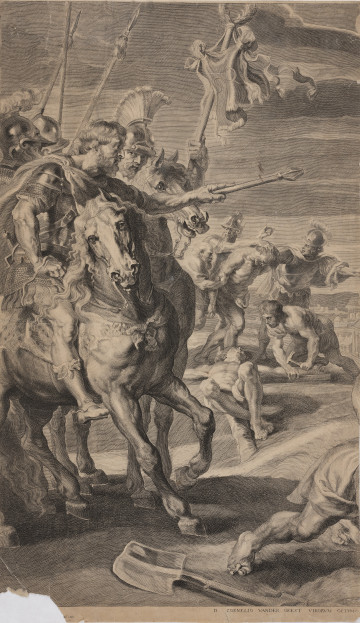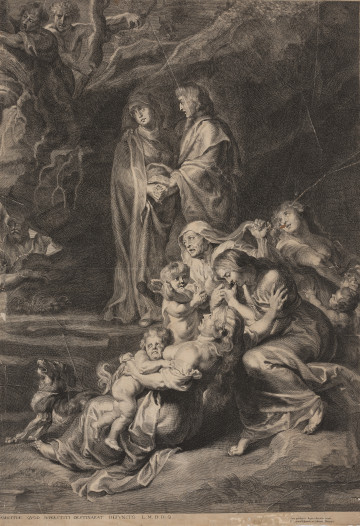
De Kriusoprichting | The Elevation of the Cross
1638
National Museum in Szczecin
Part of the collection: European painting
According to the Gospel of Matthew, after approving the sentence on Christ, Pilate washed his hands before the crowd that demanded the crucifixion of the Accused and spoke the words: 'I am not guilty of the blood of the Righteous One'. With this gesture, he wanted to take the responsibility off his shoulders, which, however, did not change the fact that he handed over the Accused to death. The representative of the mighty Roman Empire withdrew from the fight for a just cause out of conformism underpinned by fear. This behaviour was not in keeping with the dignity of a 'true Roman', whose ethos had endured for centuries in the European tradition. Hendrick ter Brugghen had already learnt about it at school, and his stay in Italy allowed him to see monuments of Roman art that immortalised emperors, chieftains and ordinary citizens portrayed with extraordinary realism. He knew perfectly well what the prefect of Judea might have looked like during a public appearance: clean-shaven, his hair cut short, dressed in a linen toga. He is nothing like the hero of our painting, who is overgrown, his hands are worn out by work, and a turban is on his head. A seventeenth-century Dutchman might have met such characters in person or paintings depicting everyday life in a harbour setting. However, they were not Romans but merchants coming from the East. The painter consciously dressed Pilate in an oriental costume, which had nothing to do with the heroic Roman virtues, but his contemporaries associated him with slyness, cunning, calculation and a 'casual' approach to the truth.
The author of the painting is Hendrick ter Brugghen, a Dutch painter who lived between 1588 and 1629. He grew up in Utrecht, where he began his education under the famous painter Abraham Bloemaert. In 1604 or 1607, he went to Italy, where he stayed until 1614, living mainly in Rome. There he came into contact with the art of Caravaggio, which strongly influenced his work. In 1616, he registered as a master painter with the Guild of Saint Luke in Utrecht. He died at the age of forty-one, probably during a plague epidemic.
Barbara Czajkowska
Author / creator
Dimensions
cały obiekt: height: 128,7 cm, width: 100,7 cm
Object type
painting
Technique
oil technique
Material
canvas, oil-based paint
Creation time / dating
Creation / finding place
Owner
The National Museum in Lublin
Identification number
Location / status

1638
National Museum in Szczecin

1638
National Museum in Szczecin

1600 — 1700
National Museum in Szczecin
DISCOVER this TOPIC
Museum of King Jan III's Palace at Wilanów
DISCOVER this PATH
Educational path